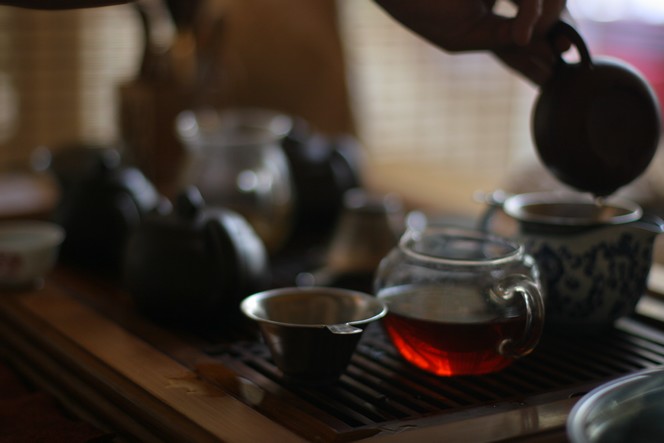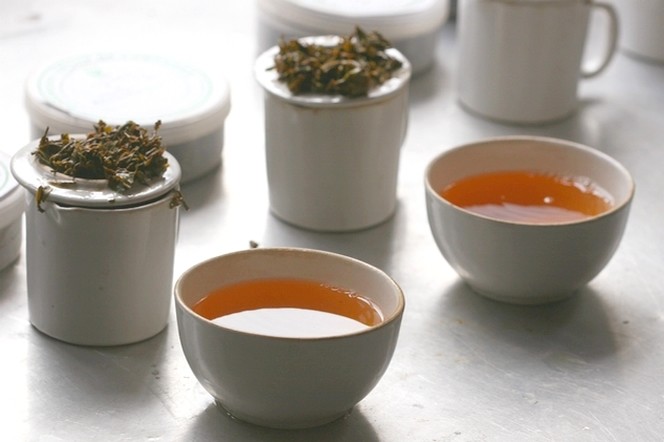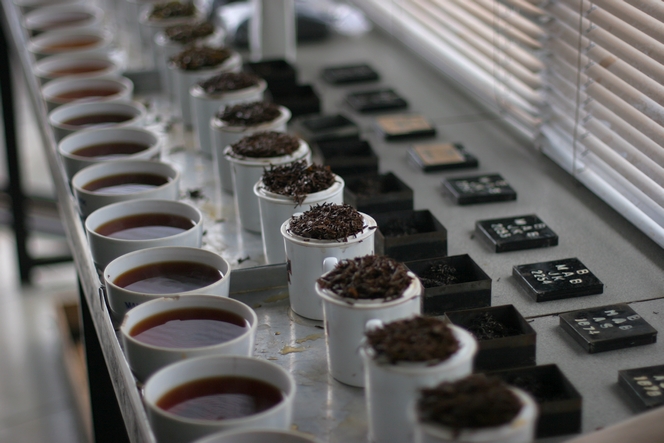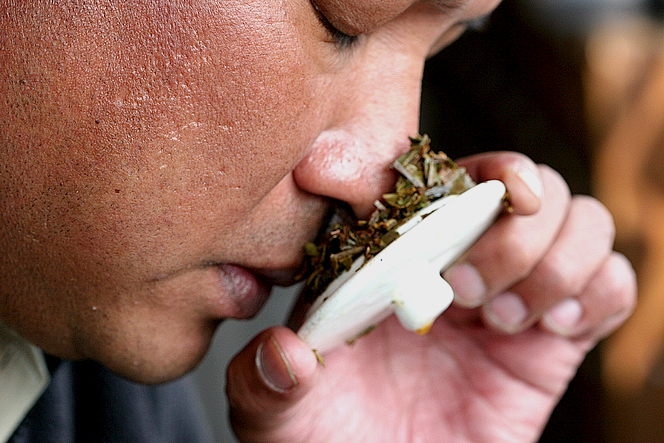In the West, tea is often prepared in a teapot, usually containing between 50cl and 150cl of tea. In Asia, however, where tea is very popular, the use of a teapot of this size, or even of a teapot at all, is not as common as here. In China, for example, where there are probably the most number of tea drinkers on the planet, tea is traditionally drunk from a zhong (a small bowl with a lid) or from tiny cups filled from a tiny teapot. These utensils – some of which you can see in this photo – comprise what is called Gong Fu Cha.
Tea Tasting
In Barnsbeg like elsewhere, I take the time for tea
Once the tea is infused you have a wait a little bit of time before enjoying it. I grab this opportunity to smell the wet tea leaves and look around the tasting room flooded with northern light. While in the teacup the temperature goes from the infusion temperature (around 85 – 90 degrees for a black tea) to the tasting temperature (around 50 degrees), I take out my camera and turn around the teacups searching for the best possible angle. There’s no hurry here in Barnsbeg (India), life goes on slowly. I take a picture of the tasting set just for the pleasure of capturing a shimmer or a colour, a shadow or a line on the teacup’s surface. And my thoughts go on drifting, just like a travelling wave.
This is call taking time. The time for tea, simply.
To select a tea, you have to taste dozens
When we attend professional tea tastings, there is a great number of teas to assess. It can range from three or four to several dozen. Sometimes the teas we taste are all quite similar, like here in Colombo (Sri Lanka). They come from the same area, and you go from one to another, comparing them in turn. First you smell the various infused leaves, then you examine each liquor. In the trade jargon, we call the infused leaf an “infusion”, and the contents of the cup, the “liquor”. (To know more about it: see the article To choose tea, you need to have a good nose).
The dry tea leaf is also presented so that you can look at it, feel and touch it, and get a complete picture of the particular batch you are tasting.
To choose tea, you need to have a good nose
When you taste tea, you first start by smelling it. This is a very important stage in the tasting process. You look at the infused leaves, inhale them and by doing so you already get lots of information on the tea. You could for example easily detect problems such as an over-drying, an overly long oxidization process if it’s black tea, or inappropriate fermentation. But of course it also allows you to identify the qualities of the tea and the different scents you could find again in the cup in more or less similar ways.
It’s only after smelling the infused leaves (what is called “infusion” in the trade) that we actually taste the liquor itself.
Here, in Badamtam (Darjeeling), Binod Gurung has his eyes closed. His nose is plunged in the damp, warm leaves. He inhales, analyses, all in a state of complete concentration.




